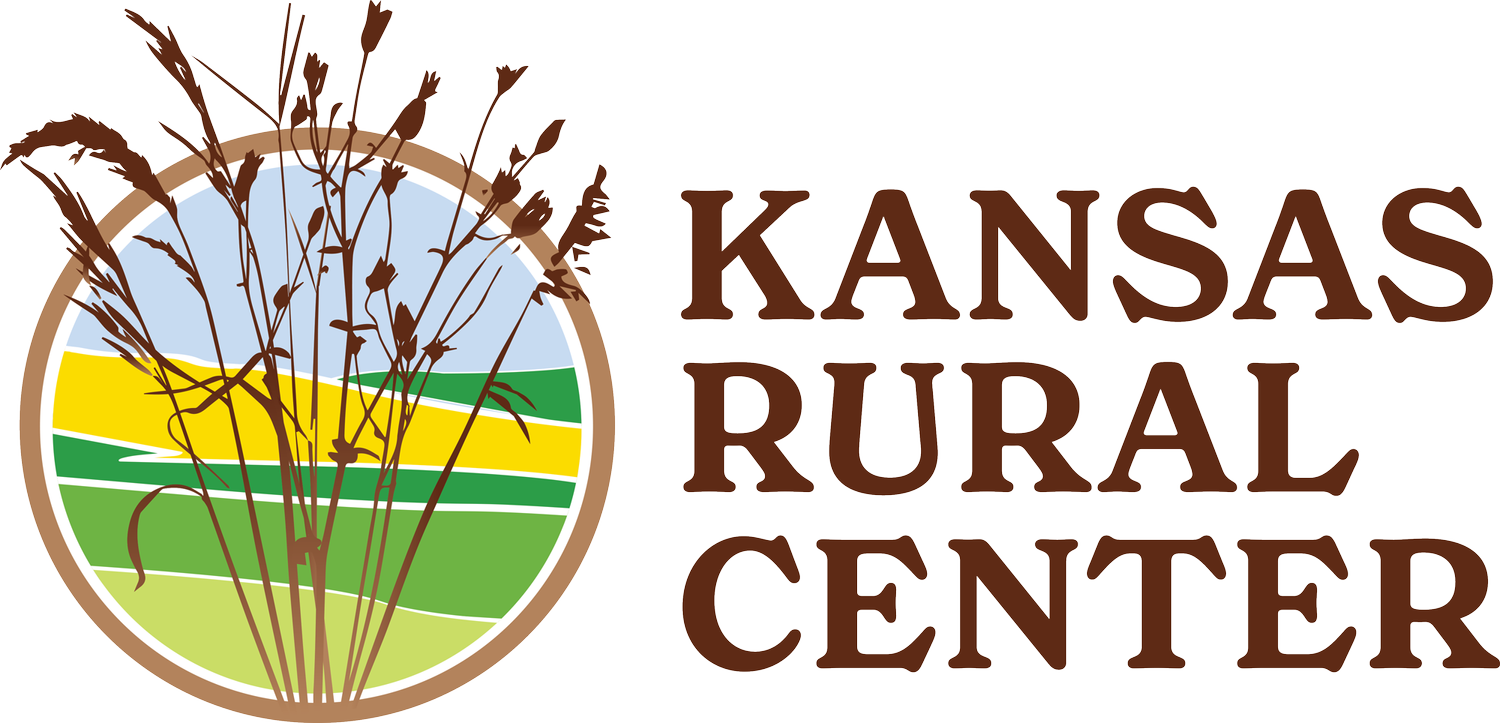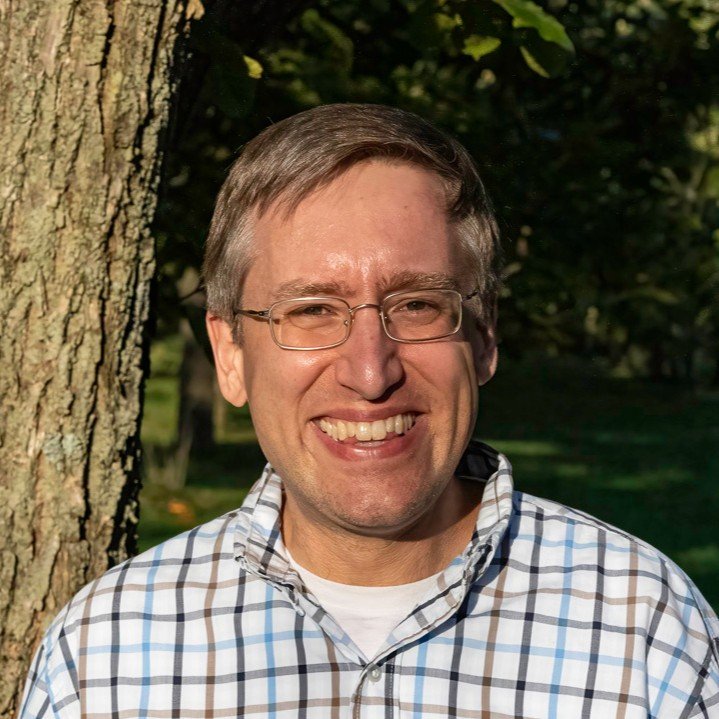Board Member Spotlight - Fred Iutzi
A Land Steward for KRC and Beyond
I grew up on a grain and livestock farm in west-central Illinois, in Hancock County, just a few miles east of the Mississippi River and the town of Hamilton, IL. As a child, I roamed around a home quarter section where most of the namable landmarks related, one way or another, to a multigenerational soil conservation project: terraces, concrete weirs, tree plantings, dry dams, and the permanent pasture that remained unbroken even though the cattle were long gone – each with a frequently explained purpose and a frequently retold story of how my great-grandparents or grandparents or parents came to put it there. Other frequently retold stories were about the vital intersection between individual perseverance and collective action: why a co-op board or church committee or Extension meeting was worth Mom or Dad rushing out the door for, even on a cold winter evening at the end of an already long day, or how Mom hadn’t always farmed, but once upon a time had been part of the first wave of women into her previous white-collar profession, the sexist nonsense they faced, and how they faced it down.
Fred Iutzi, Director of Research & Commercialization, Savanna Institute
A lot my growing up happened during the ‘80s farm crisis, and my parents and many of our neighbors had a lot of persevering to do – so the inspiration I took from agriculture was more a look in the rearview mirror than it was any concept that there might be a future in farming for anyone in my generation. So when I went to college, it wasn’t to study ag – it was to get a liberal arts degree and find my way on some other path. In hindsight, this was fortuitous because it exposed me to new vantage points and vocabularies, like environmentalism in addition to soil conservation, and social justice in addition to equal rights, and it left me just the right amount of confused and conflicted about what I needed to do next. This is the point where Kansas first comes into my story: if my upbringing in Illinois was the fuel and my college days in Missouri were the oxygen, the source of ignition was becoming aware of Wes Jackson and The Land Institute. Here was a radical who tucked in his shirt, and an agricultural research station that still in those days looked like a cross between a family farm and a guerilla encampment. And, importantly, here were people who were not afraid to name the yawning gap between how things are and how things should be, and still fearlessly set to work crafting the future for agriculture that they wanted to see. Count me in. The places that fire took me have been multifaceted – working on new crops agronomy research, helping rural community and economic developers weave food, ag, and renewable energy, into their work, and organizing co-ops, not to mention moving back to the family farm for a decade and then sallying forth again – but that’s where it got started
The North Star of my career is perennial and continuous living cover agriculture – the idea that everything we know about the world tells us that for real long-term sustainability, we need to keep most of the ground covered with vegetation most of the time, and most of that needs to actually be in perennials. Perennial agriculture is the endeavor of managing our ag land in that way while still producing abundant food, feed, fuel, and fiber. I’ve just about completed a circuit of the options: permanent pasture grazing systems in grad school and at Practical Farmers of Iowa, perennial biomass crops for bioenergy at Illinois Institute for Rural Affairs, helping resource The Land Institute’s scientists as they develop the world’s first perennial grain crops, and now pushing the envelope on what agroforestry can accomplish, in my current role as Director of Research & Commercialization at the Savanna Institute. The time is ripe for integrating trees fully back into our farming systems, whether for direct food and feed production or just for the agroecosystem services, and whether at the edge of the field or right in the middle of it, like in an alley cropping system. At the Savanna Institute, like at other places I’ve sought out to work, we’re doing a transformational change two-step: helping farmers and other food & ag businesses take maximum advantages of the fruit and nut tree crop varieties and production techniques and markets that exist right now, while actively doing the agricultural research and market development needed to fill in the missing pieces, like improved cultivars for more than just a handful of major tree species, and a new wave of market opportunities to pave the way for nut trees like chestnut and hazelnut to be grown and eaten at staple crop scale.
I suppose it’s the synthesis of all of the above that brought me to KRC – the idea that in food and agricultural and rural community development, the future is worth fighting for, and that ultimately the only way to do it is together. I also have a deep appreciation for the wave of sustainable ag and rural development institutions that took root in the 1970s and ‘80s, and the ongoing role they play in the collective action ecosystem: Illinois Stewardship Alliance and Illinois Institute for Rural Affairs in my home state, Practical Farmers of Iowa where my first job that wasn’t bucking bales for an hourly wage was located, and other state and regional groups like Sustainable Farming Association in Minnesota, the Center for Rural Affairs in Nebraska, the Pennsylvania Association for Sustainable Agriculture, and more. When I moved to Salina, KS, in 2016 to take a job at The Land Institute, the only thing I knew about KRC is that it was part of the cohort of institutions I refer to above – but that’s the only thing I needed to know to classify KRC’s work as essential. I got to know the people and the distinctiveness of the organization much better during my five years in Kansas, and leapt at the chance to join the board in 2021. When Stu Shafer called me with that invitation, I’m glad that he and others were unphased when I told them I had a move away from Kansas and back to my home state of Illinois coming soon. If I can add one idea to the mix at KRC during the three years I will have served on the board when I transition off in 2024, it will be an extra measure of encouragement to remember that network of peer organizations and the opportunity to give and receive ideas and strength across state lines.
Another factor that’s deepened my affinity for KRC are the outstanding cast of executive directors that I’ve known here. Mary Fund, who I got to know while I was her counterpart at The Land Institute and she was in her final years on the job, was the fulcrum for the organization during a substantial stretch of its history, pulled off the impressive feat of being both strong and creative over the long haul. Connie Bonfy and Zack Pistora both deserve high praise for leaning in to what is possibly the trickiest and most thankless role a person can occupy, that of interim executive director. And it has been a pleasure to watch Tom Buller charge out of the gate over the last year, in what is clearly a case of an organization and an individual rendezvousing with each other at just the right moment.
I’m proud that my life story includes five years as a Kansas resident, but I’ve always been an Illinoisan. So, as I write this from my dining room table in Bloomington, IL, I will start this way: I hope to see Kansas, rural and urban, as a good neighbor and good example in the movement toward sustainability and justice in the food system. What can Kansas learn from other places? What can Kansas teach to other places? I look forward to this conversation over the years and decades to come.
I’ll also want to see a future for Kansas where questions are asked and answered (and periodically re-asked and re-answered) along the lines of Wendell Berry’s “conversation with nature,” which Wes Jackson abbreviates as “What was here? What will nature require of us here? And what will nature help us do here?” I’m also an advocate for asking similar questions with a focus on culture – how can the culture and traditions and ideas of the people who were here and the people who are here now (whether ancient or recent arrivals or anywhere in between) shape a sustainable and just future for Kansas? We know that soil, water, atmosphere, and biota need to be stewarded and regenerated, and that people need nutritious and delicious food and deserve justice and equity. We know some principles about how those outcomes can be met. What does it distinctively look like to do that in Kansas?
Finally, don’t be afraid to color outside the lines. Many of the ideas and technologies and examples and precedents needed for a sustainable, just future already exist, and even already exist right in your neighborhood – but some don’t, and that’s okay. When individuals step forward to work together in groups, and groups set to work, that may or may not be enough to make the tasks ahead of us easy – but it most definitely is enough to make it possible.


